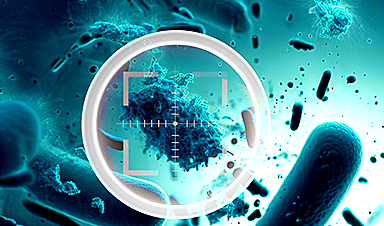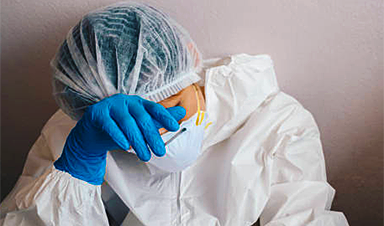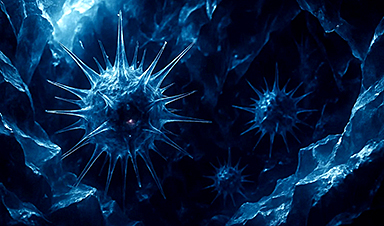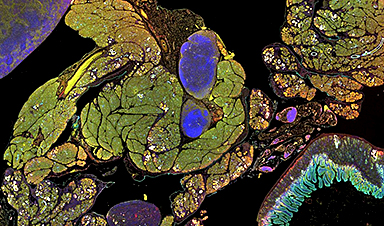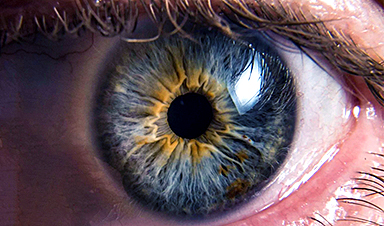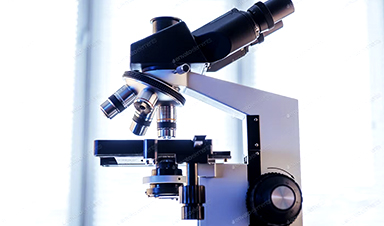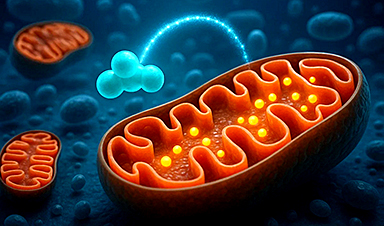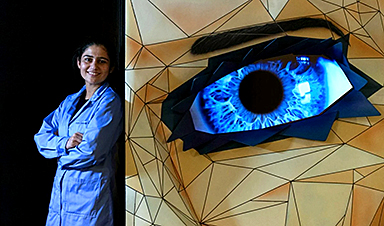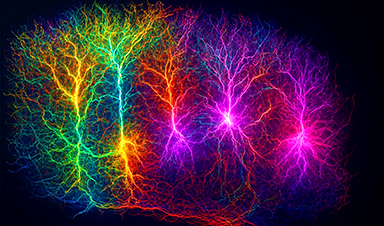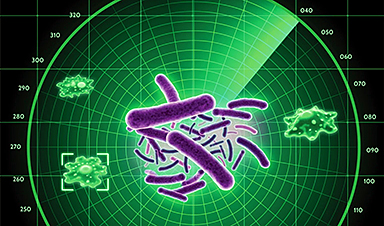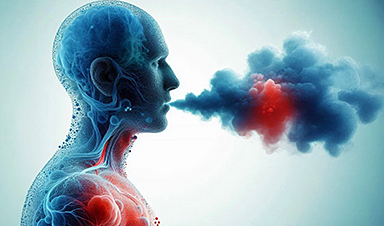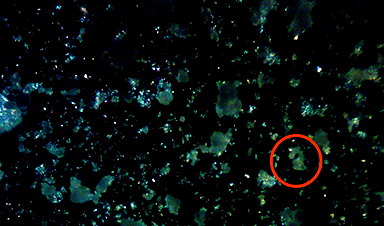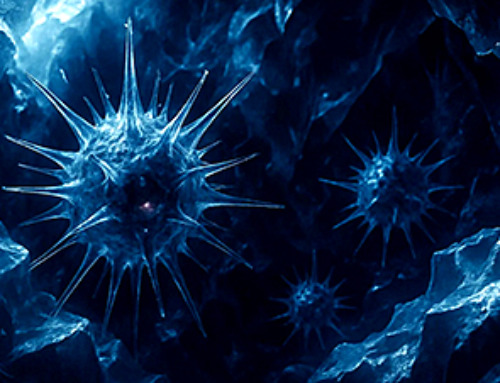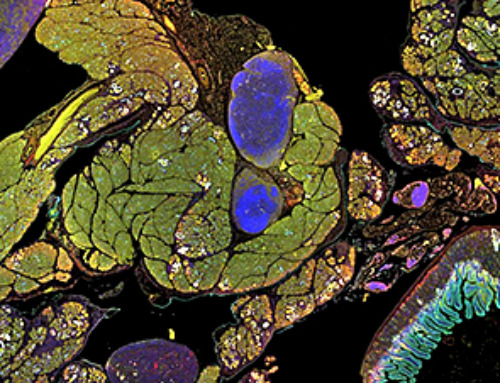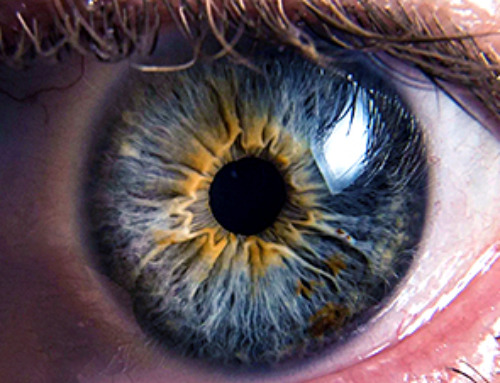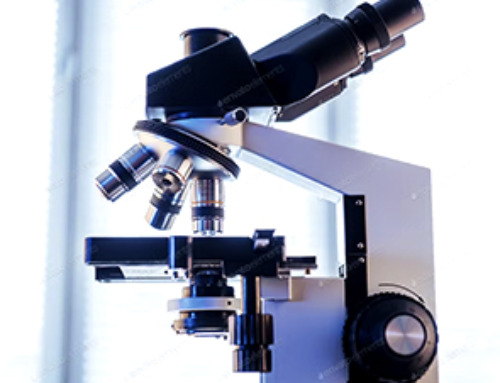Researchers from the University of Illinois Chicago and Harvard University have created an antibiotic that may provide medicine a new tool to combat bacteria resistant to drugs and the illnesses they trigger.
The antibiotic, cresomycin, described in Science, effectively suppresses pathogenic bacteria that have become resistant to many commonly prescribed antimicrobial drugs.
The promising novel antibiotic is the latest finding for a longtime research partnership between the group of Yury Polikanov, associate professor of biological sciences at UIC, and colleagues at Harvard. The UIC scientists provide critical insights into cellular mechanisms and structure that help the researchers at Harvard design and synthesize new drugs.
Understanding Antibiotic Resistance
In developing the new antibiotic, the group focused on how many antibiotics interact with a common cellular target – the ribosome – and how drug-resistant bacteria modify their ribosomes to defend themselves.
More than half of all antibiotics inhibit the growth of pathogenic bacteria by interfering with their protein biosynthesis – a complex process catalyzed by the ribosome, which is akin to “a 3D printer that makes all the proteins in a cell,” Polikanov said. Antibiotics bind to bacterial ribosomes and disrupt this protein-manufacturing process, causing bacterial invaders to die.
But many bacterial species evolved simple defenses against this attack. In one defense, they interfere with antibiotic activity by adding a single methyl group of one carbon and three hydrogen atoms to their ribosomes.
Scientists speculated that this defense was simply bacteria physically blocking the site where drugs bind to the ribosome, “like putting a push pin on a chair,” Polikanov said. But the researchers found a more complicated story, as they described in a paper recently published in Nature Chemical Biology.
By using a method called X-ray crystallography to visualize drug-resistant ribosomes with nearly atomic precision, they discovered two defensive tactics. The methyl group, they found, physically blocks the binding site, but it also changes the shape of the ribosome’s inner “guts,” further disrupting antibiotic activity.
Overcoming Bacterial Defenses
Polikanov’s laboratory then used X-ray crystallography to investigate how certain drugs, including one published in Nature by the UIC/Harvard collaboration in 2021, circumvent this common form of bacterial resistance.
“By determining the actual structure of antibiotics interacting with two types of drug-resistant ribosomes, we saw what could not have been predicted by the available structural data or by computer modeling,” Polikanov said. “It’s always better to see it once than hear about it 1,000 times, and our structures were important for designing this promising new antibiotic and understanding how it manages to escape the most common types of resistance.”
Cresomycin, the new antibiotic, is synthetic. It’s preorganized to avoid the methyl-group interference and attach strongly to ribosomes, disrupting their function. This process involves locking the drug into a shape that is pre-optimized to bind to the ribosome, which helps it get around bacterial defenses.
“It simply binds to the ribosomes and acts as if it doesn’t care whether there was this methylation or not,” Polikanov said. “It overcomes several of the most common types of drug resistance easily.”
Cresomycin’s Promising Potential
In animal experiments conducted at Harvard, the drug protected against infections with multidrug-resistant strains of common disease drivers including Staphylococcus aureus, Escherichia coli, and Pseudomonas aeruginosa. Based on these promising results, the next step is to assess the effectiveness and safety of cresomycin in humans.
But even at this early stage, the process demonstrates the critical role that structural biology plays in designing the next generation of antibiotics and other life-saving medicines, according to Polikanov.
“Without the structures, we would be blind in terms of how these drugs bind and act upon modified drug-resistant ribosomes,” Polikanov said. “The structures that we determined provided fundamental insight into the molecular mechanisms that allow these drugs to evade the resistance.”
Reference: “An antibiotic preorganized for ribosomal binding overcomes antimicrobial resistance” by Kelvin J. Y. Wu, Ben I. C. Tresco, Antonio Ramkissoon, Elena V. Aleksandrova, Egor A. Syroegin, Dominic N. Y. See, Priscilla Liow, Georgia A. Dittemore, Meiyi Yu, Giambattista Testolin, Matthew J. Mitcheltree, Richard Y. Liu, Maxim S. Svetlov, Yury S. Polikanov and Andrew G. Myers, 15 February 2024, Science.
DOI: 10.1126/science.adk8013
News
Studies detail high rates of long COVID among healthcare, dental workers
Researchers have estimated approximately 8% of Americas have ever experienced long COVID, or lasting symptoms, following an acute COVID-19 infection. Now two recent international studies suggest that the percentage is much higher among healthcare workers [...]
Melting Arctic Ice May Unleash Ancient Deadly Diseases, Scientists Warn
Melting Arctic ice increases human and animal interactions, raising the risk of infectious disease spread. Researchers urge early intervention and surveillance. Climate change is opening new pathways for the spread of infectious diseases such [...]
Scientists May Have Found a Secret Weapon To Stop Pancreatic Cancer Before It Starts
Researchers at Cold Spring Harbor Laboratory have found that blocking the FGFR2 and EGFR genes can stop early-stage pancreatic cancer from progressing, offering a promising path toward prevention. Pancreatic cancer is expected to become [...]
Breakthrough Drug Restores Vision: Researchers Successfully Reverse Retinal Damage
Blocking the PROX1 protein allowed KAIST researchers to regenerate damaged retinas and restore vision in mice. Vision is one of the most important human senses, yet more than 300 million people around the world are at [...]
Differentiating cancerous and healthy cells through motion analysis
Researchers from Tokyo Metropolitan University have found that the motion of unlabeled cells can be used to tell whether they are cancerous or healthy. They observed malignant fibrosarcoma cells and [...]
This Tiny Cellular Gate Could Be the Key to Curing Cancer – And Regrowing Hair
After more than five decades of mystery, scientists have finally unveiled the detailed structure and function of a long-theorized molecular machine in our mitochondria — the mitochondrial pyruvate carrier. This microscopic gatekeeper controls how [...]
Unlocking Vision’s Secrets: Researchers Reveal 3D Structure of Key Eye Protein
Researchers have uncovered the 3D structure of RBP3, a key protein in vision, revealing how it transports retinoids and fatty acids and how its dysfunction may lead to retinal diseases. Proteins play a critical [...]
5 Key Facts About Nanoplastics and How They Affect the Human Body
Nanoplastics are typically defined as plastic particles smaller than 1000 nanometers. These particles are increasingly being detected in human tissues: they can bypass biological barriers, accumulate in organs, and may influence health in ways [...]
Measles Is Back: Doctors Warn of Dangerous Surge Across the U.S.
Parents are encouraged to contact their pediatrician if their child has been exposed to measles or is showing symptoms. Pediatric infectious disease experts are emphasizing the critical importance of measles vaccination, as the highly [...]
AI at the Speed of Light: How Silicon Photonics Are Reinventing Hardware
A cutting-edge AI acceleration platform powered by light rather than electricity could revolutionize how AI is trained and deployed. Using photonic integrated circuits made from advanced III-V semiconductors, researchers have developed a system that vastly [...]
A Grain of Brain, 523 Million Synapses, Most Complicated Neuroscience Experiment Ever Attempted
A team of over 150 scientists has achieved what once seemed impossible: a complete wiring and activity map of a tiny section of a mammalian brain. This feat, part of the MICrONS Project, rivals [...]
The Secret “Radar” Bacteria Use To Outsmart Their Enemies
A chemical radar allows bacteria to sense and eliminate predators. Investigating how microorganisms communicate deepens our understanding of the complex ecological interactions that shape our environment is an area of key focus for the [...]
Psychologists explore ethical issues associated with human-AI relationships
It's becoming increasingly commonplace for people to develop intimate, long-term relationships with artificial intelligence (AI) technologies. At their extreme, people have "married" their AI companions in non-legally binding ceremonies, and at least two people [...]
When You Lose Weight, Where Does It Actually Go?
Most health professionals lack a clear understanding of how body fat is lost, often subscribing to misconceptions like fat converting to energy or muscle. The truth is, fat is actually broken down into carbon [...]
How Everyday Plastics Quietly Turn Into DNA-Damaging Nanoparticles
The same unique structure that makes plastic so versatile also makes it susceptible to breaking down into harmful micro- and nanoscale particles. The world is saturated with trillions of microscopic and nanoscopic plastic particles, some smaller [...]
AI Outperforms Physicians in Real-World Urgent Care Decisions, Study Finds
The study, conducted at the virtual urgent care clinic Cedars-Sinai Connect in LA, compared recommendations given in about 500 visits of adult patients with relatively common symptoms – respiratory, urinary, eye, vaginal and dental. [...]
